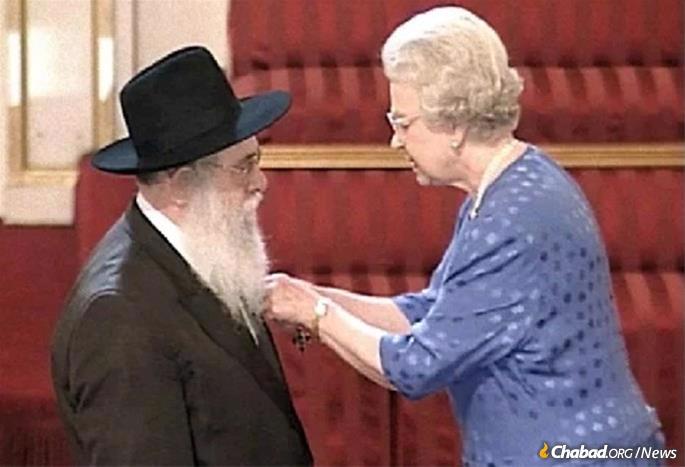The Jewish community of England is one of the largest in the world—but it wasn’t always this way. From radical hatred to royal honor, their story is truly one of thorns and roses. Read on for 12 facts about the past and present of this regal Jewish community.
1. Jewish Life Flourished in Medieval England
Back in the Middle Ages, England and France were closely connected—politically, culturally, and even Jewishly! Many French Jews crossed the English Channel and established communities in London and other towns and villages. Jewish life took root, and despite challenges, it flourished there for over two hundred years.
2. It Produced Great Jewish Scholars
Most of the great Tosafist scholars—renowned commentators on the Talmud—lived in France and Germany, but England had its own notable scholars, including Rabbi Elijah of York and his nephew, Rabbi Elijah of London. Some English Talmudists were known by their original hometowns in France, such as Rabbi Jacob of Orleans and Rabbi Yom Tov of Joigny, who both later crossed the English Channel into Britain.
3. Ibn Ezra’s Shabbat Epistle
Another medieval Jewish figure who spent time in England was the renowned scholar Rabbi Abraham ibn Ezra. During his stay in London, he had a vivid dream in which a messenger delivered a letter from the Shabbat Queen, urging him to correct the mistaken belief that Shabbat begins on Saturday morning rather than Friday night. Taking this dream to heart, Ibn Ezra dedicated himself to setting the record straight, writing a work titled Iggeret HaShabbat (Epistle of Shabbat) to clarify the proper observance of this sacred day.
4. It Was the First Country to Expel Its Jews
Like most places in the world, being a Jew in medieval England was like riding a rollercoaster—sometimes you were tolerated and sometimes you were persecuted. The first recorded blood libels took place on English soil. In 1189, mobs attacked Jews throughout England after the coronation of Richard the Lionheart—including 150 Jews who lost their lives in York. The situation worsened until, in 1290, King Edward I became the first European monarch to expel an entire Jewish community. For nearly 400 years, England was officially without Jews.
5. Rabbi Menasseh Ben Israel Helped Bring the Jews Back

In 1650, the silence was finally broken by Rabbi Menasseh Ben Israel, a courageous rabbi from Amsterdam. After five years of lobbying, he traveled to London and petitioned Oliver Cromwell to allow Jews to return. Although Cromwell never officially approved it, he agreed to look the other way, allowing Jews to quietly resettle and rebuild their community.
6. The Sephardim Came First
The first Jews to return were Spanish and Portuguese Jews from Amsterdam, which had a thriving Sephardic community. In 1701, they built the famous Shaar Hashamayim synagogue, better known as Bevis Marks. Standing strong to this day, it is the oldest synagogue in Great Britain.
7. Sir Moses Montefiore Was a Devoted Activist
Among the Sephardic families that settled in England was the Montefiore family, whose most famous member was Sir Moses Montefiore. A wealthy businessman and baron, he became a legendary philanthropist and activist, advocating for Jewish communities worldwide—from Russia to the Holy Land and Syria. Utilizing his high status and close connections with Queen Victoria and the royal family, Sir Montefiore used every opportunity to raise the banner of Jewish pride. Deeply religious, he even traveled with a minyan (prayer quorum) and a shochet (kosher slaughterer) to uphold his observance.
Read: Sir Moses Montefiore
8. Ashkenazim Arrived in Large Numbers
In the 1880s, violent pogroms and harsh persecution in Russia and Eastern Europe sent waves of Jewish immigrants fleeing to safer lands. In the decades that followed, around 200,000 Ashkenazi Jews found a new home in England, many of them settling in London’s East End. Today, their descendants make up the majority of the country’s Jewish population.
9. The Kindertransport Saved Thousands of Children
In 1938, after the horrors of Kristallnacht, the British government made a life-saving decision: they allowed Jewish children from Nazi-occupied territories to enter England as refugees. Thanks to the tireless work of German and Austrian Jewish organizations, about 10,000 Jewish children were rescued from certain death in what became known as the Kindertransport (“children’s transport”). Instrumental in these and other efforts was Rabbi Solomon Schonfeld, who led the rescue and resettlement of thousands of refugees.
10. They Have a Close Relationship With the Monarchy
In direct contrast to the hostile attitude of England’s medieval kings, today’s monarchs are much friendlier. Several Jews have been knighted, including Sir Moses Montefiore and Rabbi Lord Jonathan Sacks, the former Chief Rabbi of the United Kingdom. In 2023, the current Chief Rabbi, Ephraim Mirvis, was even invited to spend Shabbat at the palace so he could attend the coronation of King Charles—a gesture of respect and sensitivity for Jewish halachic requirements.
11. It Has a Strong Chabad Presence

In 1948, the sixth Chabad Rebbe, Rabbi Yosef Yitzchak Schneersohn, of righteous memory, appointed Rabbi Bentzion Shemtov as his official representative to England and tasked him with strengthening Jewish education across the region. Starting in 1959, several young emissaries, led by Rabbi Nachman Sudak, including Rabbi Faivish Vogel, Rabbi AD Sufrin, and Rabbi Shmuel Lew, arrived from New York. Together with their wives, they set out to inspire the Anglo-Jewish community with a new spirit of confidence and dynamism.
In close consultation with the Rebbe—Rabbi Menachem M. Schneerson, of righteous memory—they quickly launched an array of new programs, built new institutions, and cultivated strong relationships with a broad range of rabbinic and lay leaders. Today there are approximately 150 Chabad emissary couples serving diverse demographics in large and small communities across the country, with a strong presence on many college campuses.
12. Jewish Life Continues to Thrive
England today is home to numerous vibrant Jewish communities. The largest is in London, with a strong Orthodox presence in neighborhoods like Stamford Hill, Golders Green, Hendon and Edgware. With hundreds of lively schools, active synagogues, and kosher restaurants, England is a place where the King of Kings truly feels at home!
Now test your knowledge with our British Jewry quiz
The author thanks Rabbi Eli Rubin and Mrs. Chaya Leah Vogel for their invaluable assistance.







Join the Discussion